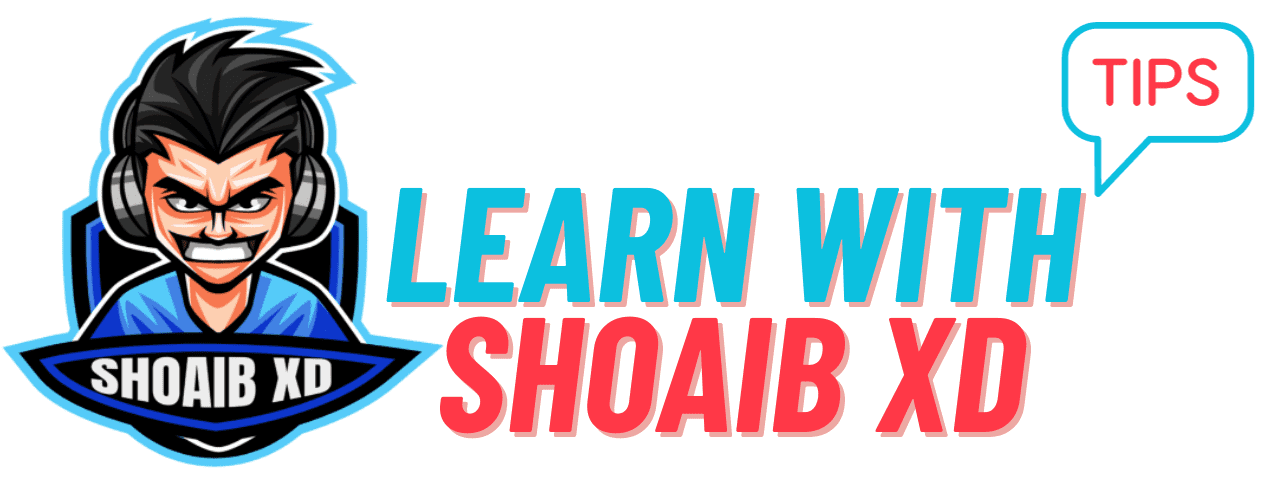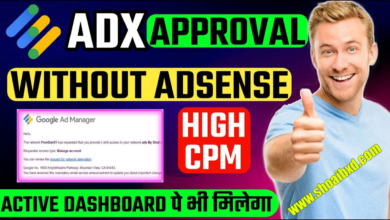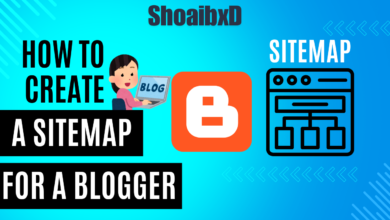

Starting a blog is a rewarding and lucrative venture that offers exciting opportunities. Through blogging, you can establish yourself as a trusted expert in your field, earn part-time or full-time income, and connect with like-minded people who share your interests and passions.
This article will show you how to start a blog and make money regardless of your experience level.
What is a blog?
In the early days of the internet, blogs were similar to diaries. Some of the early blogs were used as a way to record someone’s personal perspectives and experiences to Make Money Online.
Since then, blogs have evolved into much more than just a form of digital record keeping. Today, businesses and individuals alike create blogs to share information and earn sales and commissions.
7 reasons why you want to start a blog to Make Money Online
There are several reasons to start a blog. Maybe you’re looking to start a blog to try a fun hobby, make extra money, build a community, or for any of the following reasons.
1. Record what happens to you
The word “blog” is actually a shortened form of “weblog”, a holdover from its origins as a way to record what’s going on. Creating a blog is a great way to have a space and way to keep all your thoughts and photos in one place and you will Make Money Online in future.
2. Having an outlet for creativity
Blogging involves writing, editing, and some design. This allows for some very creative pursuits. If you’re looking for a relatively low-cost way to express yourself, blogging is a great option.
3. Share your thoughts and experiences
No one else is you. This means that you have your own unique thoughts and experiences. A blog is a platform where you can share and discuss your thoughts with others, and build genuine connections while doing so.
4. To connect with people Make Money Online.
Blogging is a great way to connect with others, including other bloggers, content creators, and your target audience. Blogging opens the door to meeting people you wouldn’t otherwise come into contact with. Sites like Facebook, Instagram, and Reddit have very active blogging communities.
5. How to improve your writing and digital marketing to Make Money Online
Blogging is a craft. If you want to hone your writing skills, blogging daily or weekly can be beneficial.
Similarly, running a blog requires a lot of work behind the scenes. In addition to being content writers, bloggers are often their own webmasters and social media marketers. If you want to develop skills in those areas, starting your own blog can give you valuable experience.
6. How to build your brand and credibility
Creating a blog can help you build your brand and establish yourself as a trusted expert in your field or industry. Blog content can show how knowledgeable and experienced you are on a particular subject.
7. To generate sales or income
Whether you have an existing business or a brand new business, you can use a blog to increase sales. According to Ambition Box, annual income for bloggers ranges from Rs 300,000 to Rs 5.8 million, with an average annual income of Rs 300,000.
Misconceptions about blogging
You don’t have to be famous to start a profitable blog. Anyone can write a blog, regardless of experience. The most common misconceptions people have about starting a blog are:
Blogging Make Money Online
As long as you have an internet connection, you can start a blog for free. Even if you decide to pay for a custom website, domain name, or photos, these costs are relatively small compared to the amount of money you could potentially generate from your content.
Blogging is a dying medium
Blogging is not dead or extinct. It’s more saturated now than it was 10 years ago, but that doesn’t mean you can’t create something successful. Now, building a profitable blog may require more effort and initial investment than if you started in the past, but that shouldn’t deter you from starting a blog.
Every blog post must be perfect to Make Money Online
You should be proud to publish your blog posts to Make Money Online, but don’t let the fear that your content isn’t “good enough” or “perfect” hold you back. Blogs are editable, so if you’re not happy with something after it’s published, you can always go back and make changes.
You need existing followers to start a blog
You don’t have to be a celebrity or an established social media personality to start a blog. In fact, many of the bloggers who are famous today, such as Shraddha Sharma, Ashish Sinha, and Amit Agarwal, were not famous until they started blogging.
Blogging is easy
Blogging may seem easy in theory. Write the text, press post and you’re done. But the truth is, unless you hire staff or outsource the marketing and webmastering aspects of running your blog, you’ll be spending your time doing more than just writing to Make Money Online in future.
Depending on your area of expertise and goals, you may need to spend a significant amount of time researching your topic and creating complementary assets such as photos and videos. Blogging isn’t always easy, but that doesn’t mean it’s not fun or rewarding.
Blogging is an easy way to make money
While it’s true that you can make money with a blog, it’s not going to help you get rich quick. Before you can start making money, you need to build an audience that wants to buy items from you.
12 steps to start a blog
If you’re ready to start a blog Make Money Online but don’t know where to start, these steps will set you up for success, no matter your ultimate goal.
1. Define your topic or niche
Finding your niche can be difficult and feel limiting, but it will help you build stronger trust in the long run. You can certainly talk about multiple themes, but make sure your main focus is consistent and specific enough to attract readers and encourage them to continue reading your work.
2. Research your competitors
Once you decide what you want to write about, do some initial research to understand who the other key players in the field are. Is your field already quite crowded, or are there very few people writing about your intended subject?
In either case, doing some research beforehand will help you understand how to create content that is better or different than your existing content.
3. Define your target audience
In addition to identifying your niche, you should also consider your audience. Who are you planning to blog for?
The answer to this question will help you write articles that are valuable and relevant to your readers. Before you jump right into writing, determine the following information about your ideal audience:
1. how old are they?
2. Where do they live?
3. What do they do for work?
4. What other forms of media are they already using?
5. Do they read other blogs?
6. What do they do in their free time?
7. What problems do they face on a regular basis?
8. What do you wish you had been more expert at?
4. Plan your first blog post
Once you’ve identified your desired audience in your niche, you can start planning your first blog post. Again, it may take some research to make sure you’re creating something your audience will want to read.
HOW TO CREATE HIGH QUALITY BLOG POST?
As a starting point, enter the idea of your desired topic into a search engine and see what types of articles appear in the results. If you find that existing results don’t explain your topic accurately or well, that’s a good indicator that you could write something better.
5. Name your blog
Every blog needs a name. You want to make sure your blog name is meaningful, memorable, and quick to type considering your specialty and brand.
If you have a name in mind, check the web and social media to make sure no one else is using it. If the name you want is already in use, you can create a new name or contact the website owner to see if the name you want is still in active use. If you really want to protect your assets, you can also trademark your company name.
6. Create branding elements for your blog
In addition to a name, you’ll need to choose a font and color palette for your blog that you’ll want to include after your website is built. You can do this yourself or outsource it to a graphic designer.
If you need a custom logo for your blog, you can design one on a free platform like Canva or work with a designer to create one for you.
7. Request a domain name
Once you’ve decided on a name for your blog, you’re ready to choose a domain name. You can check if the domain is available by typing your desired domain name in your browser and see if it displays a live website. Most domain registrars also have tools to help you find available domains.
Once you have selected an available domain, you will need to pay for the right to use it through your domain registrar. Owning and setting up a domain is a separate process from choosing a hosting site and web builder, which comes next.
8. Choosing a hosting site
Choosing a web host is an important step in creating a blog. You can’t build a website without a host. Hosts allow you to effectively “rent” your presence on the Internet.
Some platforms will host your blog for free, but instead append a brand name to your web domain, such as thefancyblog.squarespace.com or thefancyblog.wordpress.com. In these examples, to remove “.squarespace” or “.wordpress” from the URL, you would need to pay for web hosting in addition to purchasing the domain name thefancyblog.com.
Web hosting costs anywhere from 150 INR to 5,000 INR per month, depending on the amount of speed and storage you purchase. While there are many different hosting options out there, we recommend choosing one of the best web hosting services that suits your budget and needs.
9. Build a website
You can build your website from scratch or using templates and themes. It all depends on your budget and desires. No-code web builders like Blogger and WordPress allow you to design and build beautiful websites without any web development experience. Some templates and themes are free, while others can run anywhere from 500 INR to 5,000 INR.
Certain web builders offer more customization and flexibility than others. Be sure to read the specifications for each website builder you’re interested in to understand what you can do when designing your blog.
10. Upload and publish your first article
Once you’ve built your website and are satisfied with its look and feel, it’s time to upload your first article. Although you can enter and edit content directly from your website’s backend, it’s better to create all your content in a separate cloud-based editor like Google Docs. Doing so will ensure you have a safe backup of your blog content in case you experience any technical issues with your site.
We recommend that you preview your blog post to make sure it looks the way you want before you click publish. However, if you want to change or update something, you can always go back and edit it later.
11. Promote your blog
Once you publish your content to your blog, you can share the link. Social media is a popular and effective way to distribute blog content. You can share the link on your existing social channels or create a new account to complement your blog.
12. Track your analytics
After you publish and promote your blog, it’s important to track metrics such as views, visitors, and clicks. Although your hosting platform may have a default analytics dashboard built in, we highly recommend connecting your blog to Google Analytics. Google Analytics is a free tool that allows you to track not only your traffic, but also important demographic and conversion details.
You need to use analytics to generate brand sponsorships and advertising revenue.
How to make money with blogging
Bloggers can make money using a variety of strategies. Some require more effort than others. Most blogging income sources rely on volatile conditions such as search engine algorithms and brand budgets. Therefore, we highly recommend choosing multiple methods to diversify your earnings.
Brand partnership
Bloggers often work with brands to create sponsored content. This typically involves reviewing a specific product or incorporating references to the product into your regular content.
Brand partnerships can be one-time deals or turn into long-term relationships based on content performance and mutual benefit.
Advertising network
Ad networks pay you to place ads on your blog, or when someone clicks on your ad, or both. Certain networks, such as Mediavine, require a significant amount of monthly views (50,000) to advertise, while others, such as Google AdSense, do not have a minimum view requirement.
Affiliate link or code
Bloggers can join networks known as affiliate networks. Affiliate networks allow you to generate your own links to the products you feature on your blog and earn a commission when someone makes a purchase. Amazon India and EarnKaro are two common examples.
Affiliate codes work similarly to links in that you earn a small commission when someone makes a purchase. Brands may provide a unique code for readers to enter at checkout when shopping online, and this code can be promoted throughout your content to drive sales.
Digital products
If you want to sell products without the logistical hassle of coordinating packaging and shipping, digital products may be a better option. Digital products are a relatively low-effort and inexpensive way to create products that your audience will want to buy. Most digital products are available for customers to access or download immediately after purchase.
Examples of digital products that can be sold include, but are not limited to:
· Printable. You can use everything from calendars and lesson plans to budget spreadsheets.
· Online courses. Platforms like Teachable allow you to create lessons and tutorials that are more detailed than what you offer on your blog.
·E-book. E-books are self-written and self-published titles that are typically provided in PDF format.
Physical product
You can also use your blog to sell physical products, whether you’re already selling products on another channel or you want to create an entirely new product.
Insert links to existing products you sell in your blog posts, or create products tailored to your content and audience. For example, if you have a fashion blog, you can sell items such as T-shirts, hats, and tote bags that feature your blog’s logo.
Premium content or membership
Blogs are free to read, but exclusive content can be placed behind a paywall to generate additional revenue streams. Avid readers and fans must pay an access fee to read it.
Patreon and Buy Me a Coffee are two examples of platforms that help creators host subscriber-only content. You can also create a membership using these platforms. With membership, readers pay a recurring monthly fee to access premium content.
Consulting or coaching
Your blog is a great source of free information, but your readers may want to hear more from you. If you start receiving requests for specific advice or guidance, that’s a good sign that you could earn money through one-on-one consulting or coaching sessions.
conclusion
Starting a blog is an enlightening, fun, and profitable way to connect with others. Maintaining a blog takes a lot of effort, but if you’re willing to learn and grow through an ever-changing medium, you’ll find fulfillment and success.
Frequently asked questions (FAQ)
How can I increase traffic to my blog?
You can drive traffic to your blog in a variety of ways, but search engines are often considered an effective method. To help search engines find your blog, you need to optimize your articles by implementing proper headers, internal links, and meta descriptions. Many blogging platforms, such as WordPress, include SEO tools to help with this process.
How long should a blog post be?
There is no particular length required for a blog. However, if you are trying to optimize your blog article for a specific keyword, you should aim for a certain length to give your article the best chance of ranking high in search results for that topic. There may be cases. Compare your content to your competitors' content to know what to aim for.
How often should I blog?
There are no hard and fast rules about how often you should blog on your site. The only exception is to be consistent with your posting schedule. If you start blogging every day, try to maintain that pace. If you post your blog every 2-3 days, that's your schedule. Even if you only post your blog once a week or once every 10 days, the key is to be consistent if you hope to attract and retain readers. If your readers expect a new post, but you don't post for days or even weeks, that post is lost. If you use your blog to make money, this will affect your earnings.
How can I have more confidence in my blog?
If you're struggling with confidence when posting on your blog, the first thing you should know is that you're not alone. It's normal to feel anxious or uncomfortable when putting yourself out there, but the more you do it, the better you'll feel over time.
What security measures are in place for online blogs?
The most important step you can take to protect your blogging website is to set a secure and unique password, one that only you and people you trust know. Passwords should also be changed frequently. You also want to back up your site frequently, which your web host should do. Consider using a domain privacy protection service to protect your personal information. Another way to protect your personal information is to obtain a post office box instead of a home address and an Internet-based phone number instead of a personal number.




